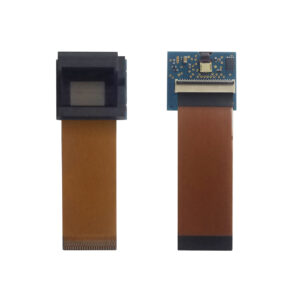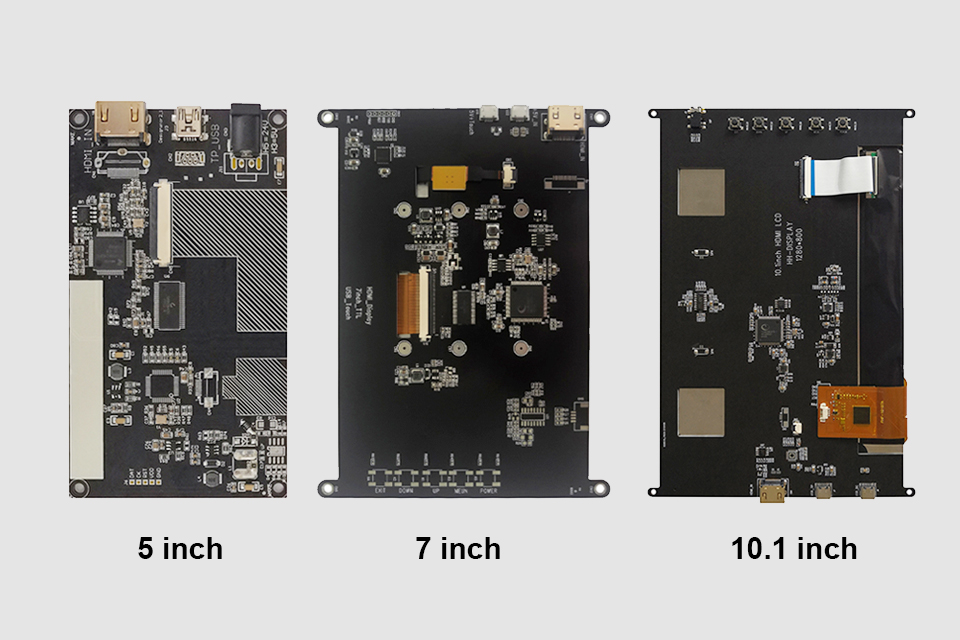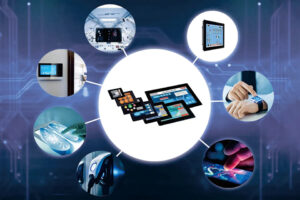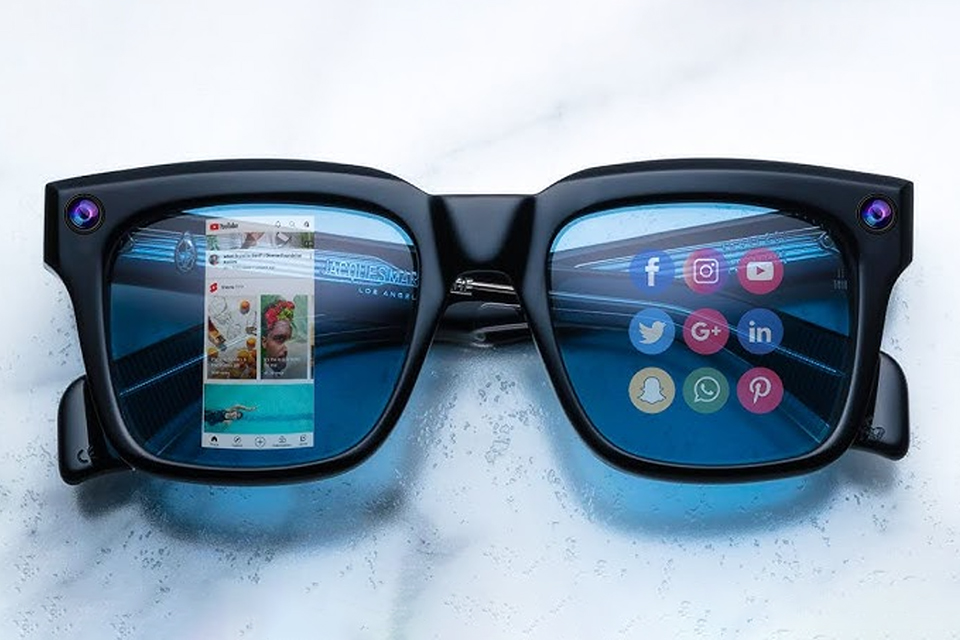
Grandes coisas nos negócios nunca são feitas por uma pessoa. Elas são feitas por uma equipe de pessoas. Temos esse grupo dinâmico de pessoas
This article explores how to connect an LCD tela para um Raspberry Pi using an HDMI placa de motorista, essentially turning your single-board computer into a miniature HDMI display screen. Whether you’re looking to create a custom mostrar for a project, build a portable gaming system, or simply repurpose an old laptop screen, this guia provides a comprehensive overview of the process. It’s worth reading because it breaks down the technical jargon, offers step-by-step instructions, and highlights potential pitfalls to avoid, empowering even novice users to complete this exciting DIY project.

O Raspberry Pi, a versatile single-board computer, offers a world of possibilities for DIY projects. Connecting it to an HDMI LCD mostrar expands these possibilities even further.
Firstly, an HDMI LCD allows you to build embedded systems. Imagine creating a custom control painel for a smart home, a portable retro gaming console, or a dedicated mostrar for sensor data. The compact size and low power consumption of the Raspberry Pi, combined with an LCD tela, make this feasible. Secondly, using an HDMI LCD can be more cost-effective than purchasing a pre-built monitor. You can often find kits that include the LCD painel e placa de motorista at a reasonable price, especially if you’re comfortable with a little assembly.
The three essential components for this project are the LCD painel, o placa de motorista, e o HDMI cabo. O LCD painel is the actual tela de exibição itself. It requires a placa de motorista to translate the HDMI sinal do Raspberry Pi into a format the LCD painel can understand.
O placa de motorista is a crucial piece of tech. It takes the digital HDMI input and converts it to the analog signals needed to control the pixels on the LCD tela. It also handles tasks like adjusting brightness, contrast, and color. Finally, the HDMI cable connects o Raspberry Pi para o placa de motorista, transmitting the sinal de vídeo. Ensure you choose a compatible HDMI cabo for optimal sinal transmission.
The size of the LCD tela depends entirely on your project requirements. A 7 inch LCD tela é uma escolha popular para Raspberry Pi projects due to its balance of portability and visibility. It’s large enough to display text and graphics clearly, yet small enough to be easily integrated into custom enclosures.
However, you can find LCD telas in various sizes, from smaller 3.5-inch exibe to larger 10-inch or even larger Painéis. Consider the intended application. For a handheld gaming console, a smaller tela might be preferable. For a desktop tela de exibição alternative, a larger mostrar would be more suitable. Also, think about the resolution. Higher resolution telas provide sharper images, but they also require more processing power from the Raspberry Pi.
Here’s a table summarizing common LCD screen sizes and their typical applications:
| Tamanho da tela | Aplicações típicas | Vantagens | Desvantagens |
|---|---|---|---|
| 3.5 inch | Small embedded systems, portable displays | Very compact, low power consumption | Small screen real estate, limited resolution |
| 7 inch | Portable gaming consoles, DIY tablets, control panels | Good balance of size and portability, reasonable cost | May be too small for some desktop applications |
| 10 inch | Desktop monitor alternatives, larger embedded systems | Larger screen real estate, better for viewing video | Less portable, higher power consumption |
Selecionando o correto placa de motorista is vital for a successful project. While VGA exibe were common, HDMI is the preferred entrada method for modern Raspberry Pi projects. HDMI provides a higher-quality digital video sinal comparado com VGA’s analog signal. This results in a sharper, clearer imagem.
When choosing a placa de motorista, check for compatibility with your LCD painel and your Raspberry Pi. O placa de motorista must apoiar the resolution and interface of your LCD painel. Maioria LCD kits come with a placa de motorista specifically designed for the included painel. Also, ensure the placa de motorista has the necessary entrada ports, such as HDMI, and that it’s compatible with the Raspberry Pi's HDMI output.

When you receive your new HDMI LCD kit, the excitement is palpable. The unboxing process is crucial to ensure that you have all the necessary components and that everything works properly. Typically, an HDMI LCD kit will contain the following:
Before proceeding, check each item carefully for any physical damage. Inspect the LCD tela for scratches or cracks. Ensure all cabos are present and in good condition. A quick visual inspection can prevent headaches later.
Now comes the exciting part: connecting o LCD placa de motorista para o seu Raspberry Pi. Here’s a step-by-step guia:
After 1 step, your Raspberry Pi should automatically detect the HDMI mostrar and output video para o LCD tela.
Providing adequate poder is crucial for the stability of your HDMI LCD setup. The LCD painel e o placa de motorista both require poder, and their poder requirements can vary depending on the size and type of mostrar.
O placa de motorista typically requires a separate poder supply, often a DC adapter with a specific voltage (e.g., 12V) and amperage (e.g., 2A). Check o especificações do seu placa de motorista to determine the correct poder requirements. Using an incorrect poder supply can damage the placa de motorista ou LCD painel.
O Raspberry Pi itself also needs poder. While it can sometimes poder smaller exibe through its GPIO pins, it’s generally recommended to usar a separate poder fornecimento para o LCD to avoid straining the Raspberry Pi's poder circuitry.
Sometimes, things don’t go as planned. Here are some common issues and how to fix them:
/boot/config.txt). Detalhe instructions on how to do this can be found online.Once you have a working HDMI LCD setup, you can explore additional enhancements. Adding tocar functionality is a popular option, turning your mostrar into a full-fledged tela sensível ao toque.
Touch tela functionality typically requires a separate tocar placa controladora que connects para o LCD painel e o Raspberry Pi. Esses placas often use USB for communication. After physically connecting o tocar placa controladora, you’ll need to install the appropriate drivers on your Raspberry Pi. There are number of ready to usar driver available.

Encontrando o caminho certo HDMI LCD conjunto ou placa de motorista can be overwhelming with so many options available. Here’s a guia to help you navigate the purchasing process:
Connecting an HDMI LCD para um Raspberry Pi opens up a world of creative possibilities. By understanding the components involved, following the connection steps carefully, and troubleshooting common issues, you can transform your Raspberry Pi into a versatile HDMI monitor.
10 Important Things to Remember:

This article dives into the exciting world of augmented reality (ar) lenses, specifically focusing on the development and potential of an interchangeable lens system for ar glasses.

This article dives deep into the lifespan and durability of OLED (Organic Light Emitting Diode) displays compared to LCD (Liquid Crystal Display) screens.

Este artigo se aprofunda no fascinante mundo dos módulos de exibição, focando especificamente na tecnologia LCD (Liquid Crystal Display) e TFT (Thin-Film Transistor).

This article dives into the fascinating realm of small OLED displays, exploring their unique characteristics, applications, and the technology that makes them possible.

Confused about the alphabet soup of display technologies? This article breaks down the differences between TFT, AMOLED, and IPS displays.

This article explores how to connect an LCD screen to a Raspberry Pi using an HDMI driver board, essentially turning your single-board computer into a miniature HDMI monitor.

This article dives into the exciting world of augmented reality (ar) lenses, specifically focusing on the development and potential of an interchangeable lens system for ar glasses.

This article dives deep into the lifespan and durability of OLED (Organic Light Emitting Diode) displays compared to LCD (Liquid Crystal Display) screens.

@ 2025 display-module. Todos os direitos reservados.
Preencha o formulário abaixo e entraremos em contato em breve.